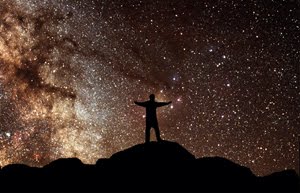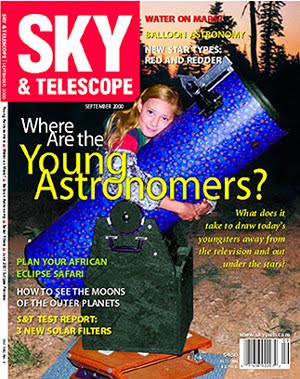Let the good times roll!
I spent three nights at Michelle Stone's Plettstone Dark Sky Preserve beginning Thursday June 21. It was a memorable trip, one that I would recommend to any astronomy or history enthusiast reading this report.
I left home mid afternoon Thursday and soon found myself on the eastern flank of Pacheco Pass. Passing through Los Banos and continuing through the broad expanse of the Central Valley, I drove ahead with no definite plan on how to get to my destination, instead, enjoying a relaxed exploration of the unknown enroute. Approaching Highway 99 southbound, I turned off on Frontage Road, followed irrigation canals, cattle grazing, occasional residences and local farmers in the general direction northeast. Amazing places... I found Chowchilla, a growing city that now has three traffic signals. Soon I was driving north on Plainsburg Road to intersect Highway 140 east to Mariposa.
This is a beautiful drive with the Sierra beyond the rolling foothills that lay ahead. Through the town of Planado, then up to Cathy's Valley where the landscape again changes, granite chards with orange lichen breaking through the ground as the road begins to wind and climb. A few miles ahead the road turns north and offers a view west of the Central Valley across to the Coastal Mountains.
My favorite part of the drive begins soon after. Prior to reaching Mariposa, a side road shortens the drive to Michelle's.. the Mount Bullion Cutoff.
I love the name of the place. Mount Bullion. It forms images of the riches of the California Gold Rush. Mariposa and the surrounding area is steeped in Gold Rush lore.
The Mount Bullion Cutoff is at most 10 miles of scenic backroad driving, past small ranches, a driving school, creeks and rolling hills. It terminates at the small community of Mount Bullion, a small town with several quaint homes, an airport the Apricot Inn restaurant and Highway 49. We head north from there to Bear Valley, walking distance from Michelle's property.
Bear Valley is the location of John C. Fremont's home. Fremont had very large land holdings in and around Bear Valley.. eventually selling the property for $6 million around 1880. Amazing as it sounds, I have heard Fremont died broke.
Fremont ran a large hotel in Bear Valley, as well as the Bon Ton, which today is a fine restaurant. I was at first struck by the oddity of a restaurant with a French name here in Bear Valley. It was Mimi, my daughter, who last month noted the name, as she's studying French in school. I've come to recall though that the gold rush was not an American phenomena, but an international frenzy. And so, we have places with names like French Camp, Bon Ton, etc..
Here is a link to the restaurant with their menu, I intend to eat there next time I visit Plettstone:
http://www.mariposamall.com/bonton/bearvalley.htm
Here is another link with some local history:
http://www.malakoff.com/goldcountry/bearvall.htm
If this isn't enough... an hour upstream you can enjoy the day in Yosemite.
My arrival at Michelle's was uneventful, I found myself alone. I set up the 18" Obsession and my 8" CPT. A dinner of sushi and beer as sunset took place, then a quick cleanup in the outdoor shower. Perfect!
I spent the first night looking for Herschel catalog objects in Ursa Major. I was chasing right ascension as the constellation dove toward the horizon. I needed objects in hours 13 and 14. Of the many objects I hunted down my favorite of the night had to be NGC 5484. This is just a small smudge, but the field it sits in, and that around it are fun. 5484 has a B magnitude of 15.7 and V of 14.7. It was challenging and required study of the star fields around it to nail down the position accurately. In the same field are NGCs 5485 and 5486, significantly brighter, but due to their angular size, still quite dim visually. A chain of three bright stars to the NW of these galaxies, and a distinctive line of stars begin at the SW end of the bright stars and extend E/W. These stars make certain identification possible.
One of the oddities from Thursday night was my inability to observe a few questionable objects. I could not find NGC 3645 or NGC 3911 in Leo. I wanted these two galaxies as they were part of a small handful I had remaining on the Herschel 2500+ in Leo. Has anyone observed these?
The next day temps were high, about 105 degrees, yet staying in the shade and keeping hydrated helped. Mid day Marsha Robinson pulled in, and later Paul and Michelle joined us. Another cool shower after dinner put me in a great mood for observing.
Friday night was better than Thursday... it seemed steadier, although the prior night was quite transparent and gave good results. My favorite sight on Friday was the field that included NGC 4015 in Coma Berenices. A mag 8.3 star anchors a field that contains 13 galaxies within reach of my telescope under excellent conditions. This night I was able to pick out my target object along with 7 other galaxies without working at it. Had I spent more time in the field, I would probably had seen the other 7 galaxies, but I was after specific objects and did not want to dally working off-list objects. Still, the brighter galaxies here were too easy to ignore. 4015 sits about 12 minutes SE of the bright star. Five more minutes SE is NGC 4023. Just SE of the bright star is NGC 4005. NW of the star is a line of three galaxies in line NNE/SSW within 9 minutes of each other, including NGC 3987, NGC 3993 and NGC 3997. A short hop NE of those are NGC 4018 and NGC 4022.
Saturday Bob Czerwinski joined us in late afternoon. Temperatures were pleasantly 20 degrees cooler than the day before. Bob set up his scope and tent while the rest of us attended to preparing a BBQ. Chicken, potato salad, corn on the cob, polska, mixed garden salad, fine bottle of Chardonnay and cherry pie for desert. Great way to start the evening!
The sky at sunset was covered with high cloud, varying between thin and opaque. I lay down in my truck and slept for an hour or so, waking up to improved conditions. As we talked, the sky opened up from zenith westward. This put Coma and Bootes in prime observing position. The sky varied between half open and mostly open off and on during the night. Bob and I called it quits at about 3:30 a.m.
The best view of the night in my scope was the last... not because of the detail, not because of the size, not because there was anything particularly unique about the objects... but for an odd sensation of isolation and fleeting nature the view evoked. The view was in Bootes of NGC 5730 and NGC 5731. Two galaxies dance alone close together in the field of view... but a few brighter stars surrounding them to provide line of sight company. The galaxies are almost identical in size, shape and brightness. Two spindles at the edge of perception, momentary visions of creation that once glimpsed, disappear, like a moment of illumination when some surprising truth is revealed then hidden away again... remaining only as a memory. These two solitary travellers seem to be in a cosmic dance, slightly off angle from one another, otherwise identical. It reminded me of companionship, friendships in an enormous universe, and how transient it all is.
I hope you all had a great time observing over the weekend. Thank you to Michelle and Paul for their kind and generous nature. Their company and companionship make for the best of times!
Let's do it again.... laissez les bon temps roulez!






